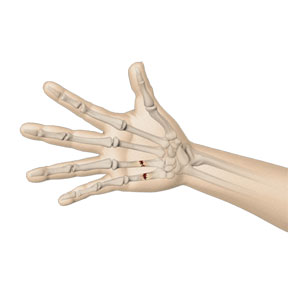What is a Fracture of the Hand?
A fracture is a break in the bone, which occurs when force greater than the bearable limit is applied against a bone. The most common symptoms of any fracture include severe pain, swelling, bruising or bleeding, deformity and discoloration of the skin, and limited mobility of the hand.
What is a Finger Fracture?
A finger fracture is not a minor injury. If left untreated, a finger fracture can lead to stiffness, pain, disruption of the alignment of the whole hand, and interference with specialized functions such as grasping or manipulating objects. Finger fractures commonly occur during sports activities, while breaking a fall, or while operating machinery.

Diagnosis of Hand and Finger Fractures
The diagnosis of a hand or finger fracture is based on your history, physical examination, and X-ray imaging. X-rays will help to determine the type and severity of the fracture. X-rays are the most widely used diagnostic tools for the evaluation of fractures.
Treatment for Hand and Finger Fractures
The objective of early fracture management is to control bleeding, provide pain relief, and immobilization. The next step in fracture management is the reduction of the fracture and maintenance. It is important to ensure the involved part of the body returns to its previous function after the fracture heals. To achieve this, maintenance of fracture reduction with immobilization technique is performed by either nonoperative or surgical methods.
Nonoperative Therapy for Hand and Finger Fractures
The bones can be realigned by manipulating them into place; this is called a manual reduction. Following this, splints, casts or braces made of fiberglass or plaster of paris material are used to immobilize the bones until they heal. A cast is worn for three to six weeks.
Surgical Therapy for Hand and Finger Fractures
During surgery, the bones are realigned and the fracture is held in place using wires, plates, screws, or intramedullary nails.
Rehabilitation following Treatment of Hand and Finger Fractures
Fractures may take several weeks to months to heal completely. Patients should limit activities, even after the removal of the cast or brace. This allows the bone to become solid enough to bear stress. A rehabilitation program involves exercises and a gradual increase in activity levels to strengthen muscles and improve range of motion.
